Green Beans Farming
Green beans (Phaseolus vulgaris), commonly called string beans, snap beans, or French beans, are a widely cultivated warm-season vegetable valued for their nutrition and high market demand. They are grown successfully in both small household gardens and large commercial farms, with proper land preparation, irrigation, and crop management being key to achieving good harvests.
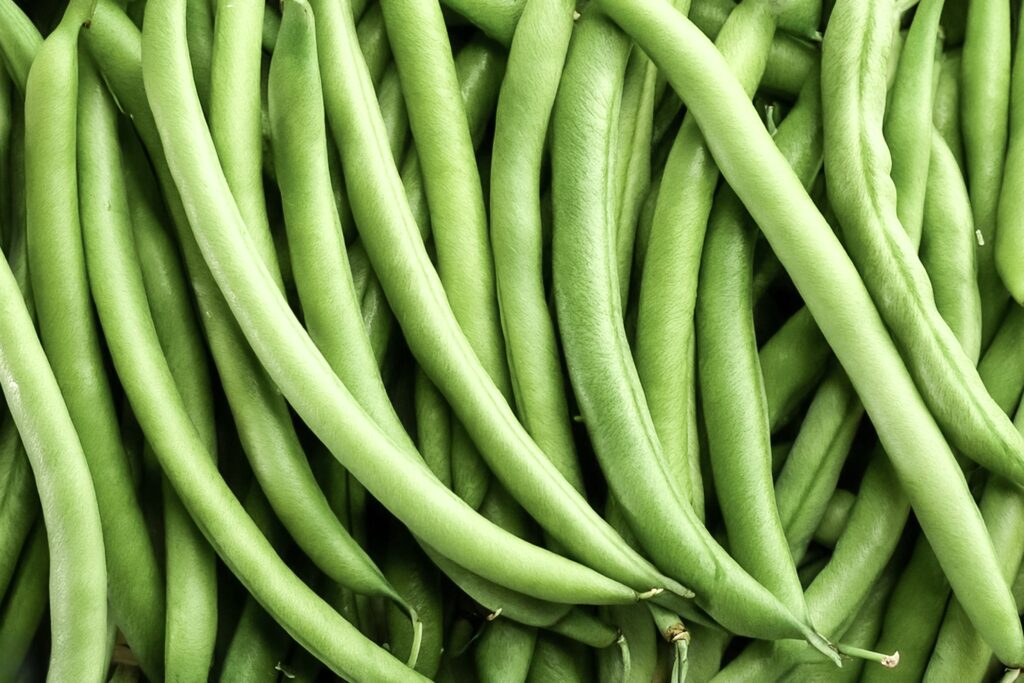
Green beans cultivation is considered a highly profitable venture since it requires only moderate investment but offers excellent financial returns. Typically, the cost of production per acre is about NRs. 56,000, while the income can reach nearly NRs. 180,000, giving farmers a net profit of around NRs. 124,000.
This demonstrates that the green beans farming profit per acre can generate up to 221% return on investment, making it an attractive option for growers. With the adoption of good farming techniques, regular irrigation, and effective pest and disease management, farmers can further increase both yield and profitability.
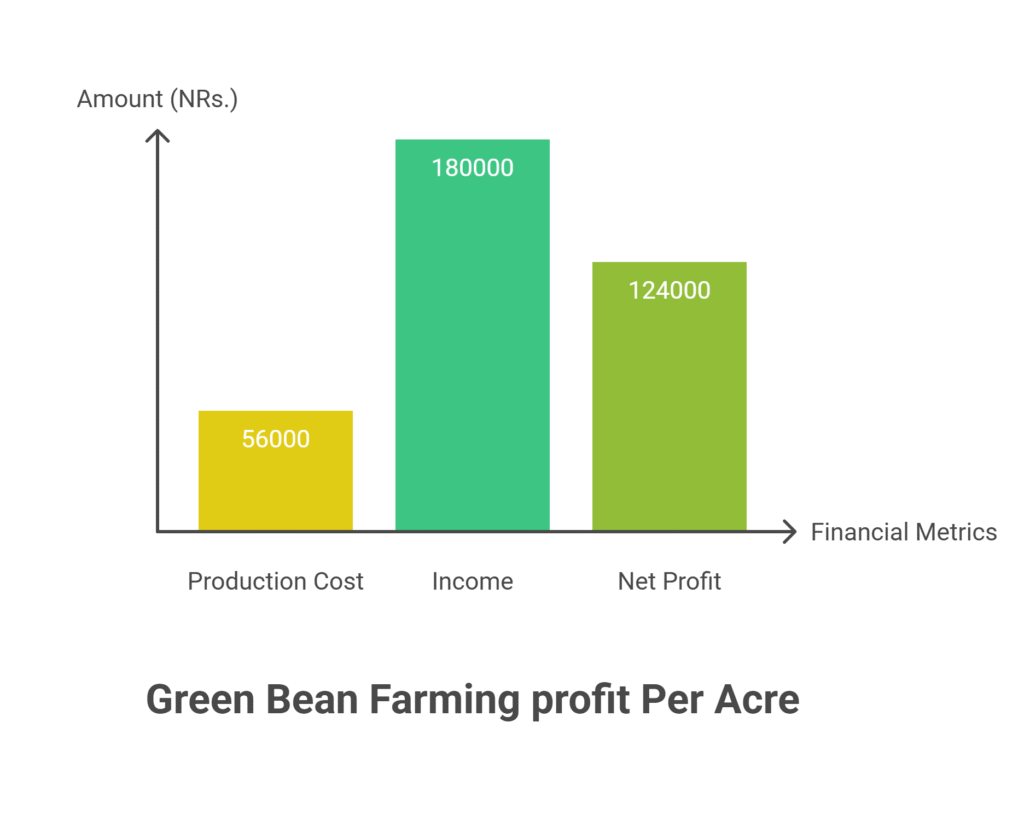
Land Preparation
Proper land preparation is essential for achieving good germination and strong root development in green beans. The process begins with deep plowing, usually to a depth of 15–20 cm (6–8 inches), using a moldboard or disc plow. This step helps to turn the soil, bury crop residues, and control weeds effectively.
In order to break up big clods and make a fine, loose, and well-aerated seedbed—which is essential for the fragile roots of green bean seedlings—the field is harrowed two or three times after plowing. In order to guarantee uniform water distribution during irrigation and avoid waterlogging in low-lying areas, the field must be properly leveled.
Finally, bed formation is carried out based on the crop type and field conditions. Flat beds are generally used for bush varieties, while raised beds or ridges are recommended for pole types and in areas with heavy rainfall or poor drainage, as they help reduce the risk of root rot.
Soil Type
Green beans thrive in loamy, well-drained soils that are rich in organic matter. The ideal pH range for green bean growth is between 6.0 and 7.0. Overly alkaline soils can lead to micronutrient deficiencies, while soils with a pH below 5.5 can be hazardous to manganese and aluminum. Since soggy circumstances can quickly result in seed rot, damping-off infections, and root rot, which can negatively impact the crop’s health and productivity, proper drainage is crucial.
Climatic Requirements
Warm climates are ideal for green bean growth, with ideal temperatures falling between 18°C and 27°C (65°F and 80°F). Because the crop is susceptible to frost in both the early spring and late fall, it is imperative that the growing season be timed correctly.
The crop requires a good amount of moisture, typically around 600–650 mm of water throughout the season, which often makes supplemental irrigation necessary for consistent yields.
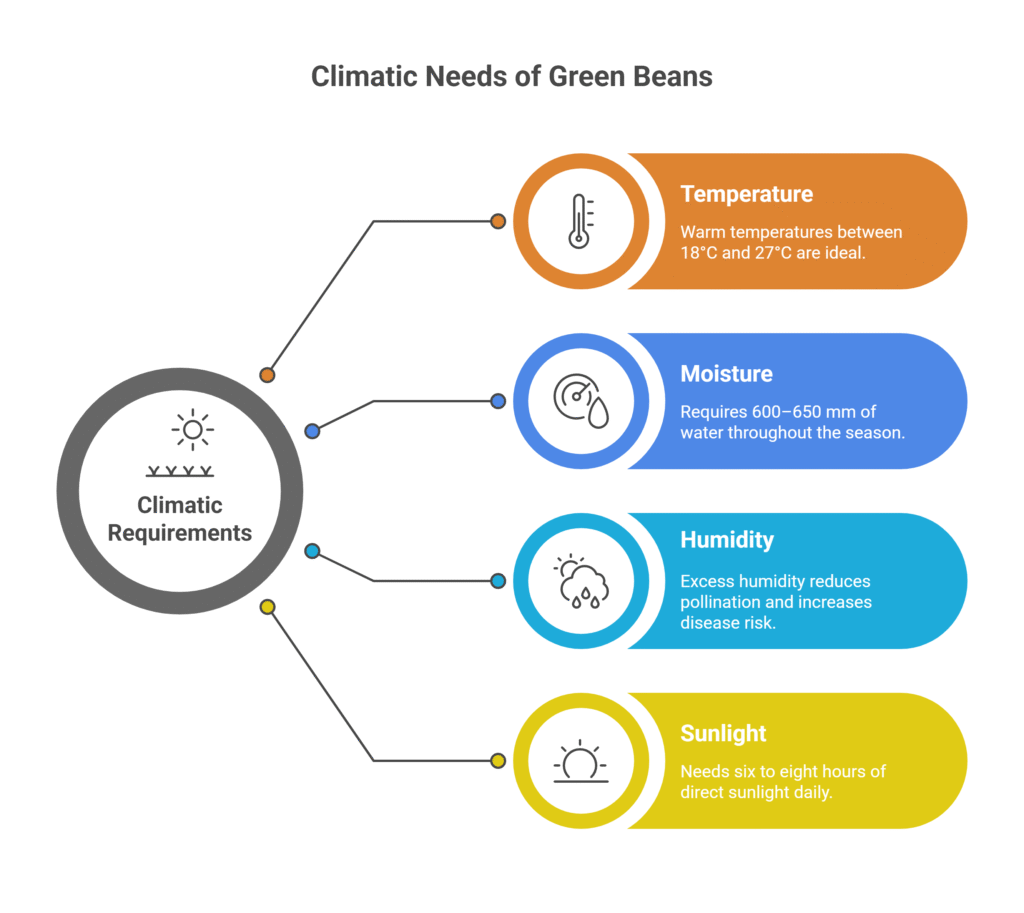
However, excess humidity or prolonged rainfall during the flowering stage can negatively impact the crop. Such conditions reduce pollination efficiency and increase the chances of disease outbreaks.
Green beans are a sun-loving vegetable that requires six to eight hours of direct sunshine per day in order to grow healthily and produce at a high rate.
Major Cultivars
The two main growth patterns of green bean cultivars are bush beans and pole beans.
Major Cultivars of Green Beans
| Feature | Bush Beans | Pole Beans |
| Growth Habit | Determinate | Indeterminate (Vining) |
| Height | 0.5 – 1.5 feet | 5 – 10 feet |
| Support Needed | No | Yes (Trellis, poles, etc.) |
| Maturity Time | 45 – 60 days (early) | 60 – 90 days |
| Harvest Period | Short; produces pods all at once | Long; continuous yield |
| Key Characteristics | Ideal for mechanical harvesting | Higher yield per acre over time |
| Common Varieties | Provider, Contender, Bush Blue Lake, Derby, Roma | Kentucky Wonder, Blue Lake, Scarlet Runne |
Propagation
Green beans are propagated solely through seeds, as their fragile root system makes them unsuitable for transplanting. For this reason, the crop is established by direct seeding into well-prepared fields.
Seed Rate per Acre
The seed rate for green beans varies depending on factors such as growth habit, plant spacing, seed size, and germination potential. Using certified, disease-free seeds is crucial to ensure proper crop establishment and achieve higher yields. Typically, bush bean varieties require about 25–35 kg of seed per acre, whereas pole bean varieties need comparatively less, around 15–25 kg per acre, because of their wider spacing.
To safeguard seeds against fungal infections, they should be treated 24 hours before sowing with Trichoderma at 4 g/kg or with Thiram or Carbendazim at 2 g/kg of seed. For fields cultivating green beans for the first time, it is also recommended to treat seeds with Rhizobium, following the same practice commonly applied in cluster bean farming.
Nursery Management
Green beans are typically not grown in nurseries, as they are highly sensitive to transplanting shock. The recommended method for cultivation is direct seeding in the field. However, if an early start is required, seeds may be sown in biodegradable containers such as peat pots, which allow planting directly into the soil without damaging the delicate root system.
Planting
a). Planting Season
Planting season is from mid-May to mid-July.
b). Spacing
| Bean Type | Row Spacing | Seed Spacing (within row) |
| Bush Beans | 45-60 cm | 5-10 cm |
| Pole Beans | 90-120 cm | 15-20 cm |
c). Pit Preparation
Bush beans are typically sown in shallow furrows, while pole beans are planted in small mounds or hills, placing 4–6 seeds per hill and later thinning to retain the strongest 3–4 plants.
d). Planting Method
Seeds should be sown 2.5–4 cm deep with firm seed-to-soil contact, as deeper planting can impede emergence.
e). Number of Plants per Acre
| Bean Type | Number of Plants per Acre |
| Bush Beans | 67,450 – 179,866 |
| Pole Beans | 16,862 – 29,977 |
Intercropping
Green beans, being a short-duration crop, are excellent for intercropping. They are commonly interplanted with slower-maturing crops like maize, sugarcane, or fruit tree saplings in orchards. They fix atmospheric nitrogen, which can benefit the companion crop. Avoid intercropping with other legumes.
Irrigation
Consistent soil moisture is essential for green beans, particularly during flowering and pod development, as water stress at these stages can cause blossom and pod drop, significantly reducing yield. Light irrigation after sowing helps support germination, but maintaining adequate water during reproductive growth is most critical.
Among irrigation methods, drip irrigation is the most efficient since it delivers water directly to the root zone, conserves water, and prevents wetting of foliage, thereby reducing the risk of diseases. Furrow irrigation is also common, but overhead sprinklers should be avoided due to the higher chances of fungal infections. On average, green beans require about 1 to 1.5 inches of water per week, and irrigation should begin whenever the top 1–2 inches of soil become dry.
Fertilizer and Manure
Soil testing is highly recommended for accurate fertilizer application, and green beans, which have moderate fertility requirements, benefit from their symbiotic relationship with Rhizobia bacteria that helps fix nitrogen.
| Fertilizer Type | Application Rate & Method | Additional Notes |
| Organic Matter | 10-15 tons/acre | Incorporate well-decomposed Farmyard Manure (FYM) or compost during land preparation. |
| Biofertilizer | 800g/acre of each (Azospirillum, PSB, Potash Mobilizing Bacteria) | Apply during the final plough. |
| Fertilizer (N:P₂O₅:K₂O) | 25:50:50 kg/acre | A common recommendation. |
| Phosphorus (P) & Potassium (K): Full basal dose. | Applied before planting. | |
| Nitrogen (N): 25 kg/acre in split doses. | Half as a basal dose, half top-dressed 4-5 weeks after planting (before flowering). |
Weed Control
Weeds compete aggressively with young bean plants for nutrients, water, and light, making effective control essential. Cultural methods such as shallow hoeing and hand weeding, performed 2–3 weeks after emergence, are beneficial, while mechanical cultivators can be used between rows for larger plantings.
Mulching with black plastic or organic materials like straw or grass clippings helps suppress weeds, conserve soil moisture, and maintain warmth. Chemical control using pre-emergence herbicides like Pendimethalin can be applied after sowing but before weed emergence, though herbicides should be used with caution and strictly according to label instructions.
Inter culture operation
Training is essential for pole beans, which require a trellis system made from wooden stakes, bamboo poles, or nets to climb; guiding the vines onto the support improves air circulation, sunlight penetration, facilitates harvesting, and keeps pods clean. While green beans generally do not need pruning, pole beans benefit from pinching the tip of the main vine once it reaches the top of the support, as this encourages side branching and increases pod production.
Flowering and Fruit Management
Flowering in beans begins 35–45 days after planting, and while they are self-pollinating, insect activity can enhance pollination. The most important management practice during this phase is to provide adequate water and nutrients to prevent stress, which can lead to flower and pod drop.
Pest and Disease Management
Common Pests
Aphids
Aphids damage plants and may spread viral infections by consuming the sap from leaves and stems. Neem oil at a rate of 2-3 milliliters per liter of water or insecticidal soap, as directed on the label, can be used to control them. Aphid populations can also be successfully decreased by introducing natural predators like ladybugs.
Bean Leaf Beetle
Photosynthesis and yield are decreased by these insects’ chewing holes in leaves and pods. Physical barriers, such as row coverings, can be used to protect young plants, or pyrethrin-based pesticides can be applied at a rate of 0.5 to 1.0 milliliters per liter of water. Frequent scouting aids in management and early identification.
Mexican Bean Beetle
Both larvae and adults feed on leaves, skeletonizing them and causing significant damage. Management can include hand-picking beetles and larvae from plants. For larger infestations, spraying Spinosad at 0.5–1.5 ml per liter of water is effective, following the recommended safety guidelines.
Spider Mites
Spider mites diminish plant vitality by causing yellow stippling on leaves, particularly in hot and dry weather. Applying miticides like Abamectin at a rate of 0.5 ml per liter of water or frequently spraying water to remove mites are two methods of control. Infestations can also be avoided by keeping the soil at a suitable moisture level.
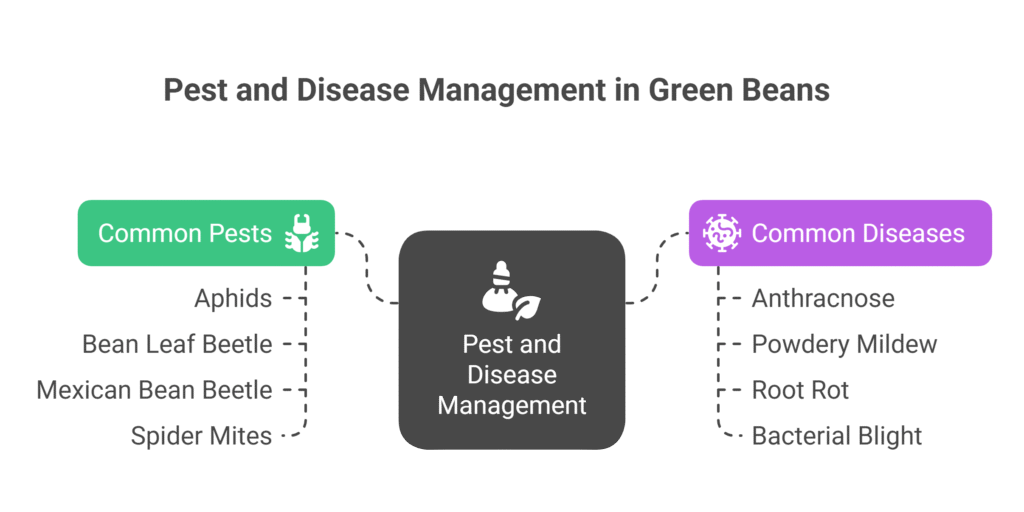
Common Diseases
Anthracnose
Anthracnose is a fungal disease that produces dark, sunken lesions on pods and leaves, reducing yield and quality. Management includes using resistant varieties and certified disease-free seeds. Fungicidal treatment with copper-based products, such as copper oxychloride at 2–3 g per liter of water, can help control the disease when applied at the first sign of infection, repeating every 10–14 days if necessary.
Powdery Mildew
This disease appears as white, powdery growth on leaf surfaces, interfering with photosynthesis and plant growth. Improving air circulation by proper spacing and pruning helps reduce incidence. Fungicides like wettable sulfur can be applied at 2–3 g per liter of water or potassium bicarbonate at 1–2 g per liter, spraying at early stages of infection and repeating weekly as needed.
Root Rot (Rhizoctonia, Pythium)
Root rot is caused by pathogens that thrive in waterlogged soils, leading to wilting, stunted growth, and plant death. Preventive measures include ensuring proper soil drainage, avoiding over-irrigation, and using raised beds. Fungicides such as metalaxyl-m at 1–2 ml per liter of water can be applied as a soil drench for high-risk fields.
Bacterial Blight
Bacterial blight causes water-soaked spots on leaves that may turn brown and necrotic. Using disease-free seeds and practicing crop rotation are key preventive measures. Copper-based bactericides at 2–3 g per liter of water can be applied at early symptom appearance, repeating every 10–14 days to reduce disease spread.
Harvesting
Timing
Harvesting of beans is highly stage-specific to ensure the best quality and market value. Pods should be picked when they are immature yet well-filled, but before the seeds inside begin to bulge. At this stage, the pod should snap cleanly and crisply when bent, which generally occurs 7–14 days after flowering. Timely harvesting prevents pods from becoming tough and fibrous.
Method
Harvesting methods vary depending on the bean type. For bush beans, harvesting may be done once-over by machine for large-scale operations or manually in multiple pickings over a 1–2 week period. In the case of pole beans, hand-picking is essential and typically carried out every 2–4 days over several weeks. This frequent harvesting not only ensures pods are picked at the right stage but also stimulates continuous production.
Time of Day
The best time to harvest beans is early in the morning when field temperatures are cooler. Harvesting during this period helps reduce field heat, maintains the crispness of the pods, and extends their post-harvest freshness.
Yield
Depending on cultivar, management, and season, bush beans typically produce 4,000–8,000 kg of fresh pods per acre.
Cost of Investment per Acre for Green beans
| S.N. | Categories | Cost of Investment (NRs.) |
| 1 | Land Preparation | 15,000 |
| 2 | Seed | 2,000 |
| 3 | Sowing | 5,000 |
| 4 | Fertilizers and Manure | 9,000 |
| 5 | Irrigation | 5,000 |
| 6 | Weed Control (Pre & Post-emergence) | 3,000 |
| 7 | Pest & Disease Control | 3,000 |
| 8 | Harvesting | 6,000 |
| 9 | Miscellaneous Costs | 5,000 |
| Total Cost | 56,000 |
Income per acre from Green Beans
| Particulars | Estimated Yield / Acre (Kg) | Market Price (NRs./Kg) | Total Income (NRs.) |
| Yield | 6,000 | 30 | 180,000 |
Analysis of Green Beans Farming Profit Per Acre
With a total investment of NRs. 56,000 per acre, green bean farming can generate an income of NRs. 180,000, resulting in a net profit of NRs. 124,000 per acre. This provides an impressive Return on Investment (ROI) of 221%, highlighting the high profitability of green bean cultivation when managed effectively.
Crop Calendar for Green Beans
This calendar is based on a primary planting window from mid-May to mid-July, as per your documentation. Timings are approximate and can shift slightly based on local climate conditions, specific cultivar chosen (bush vs. pole), and whether multiple successional plantings are made.
Phase 1: Pre-Planting (2-3 Weeks Before Sowing)
| Timing | Activity | Key Details |
| 2-3 Weeks Before Sowing | Land Preparation | • Deep plow (15-20 cm). • Harrow 2-3 times to create a fine tilth. • Level the field properly. • Form beds: flat beds for bush beans, raised beds/ridges for pole beans. |
| Soil Amendment | • Incorporate 10-15 tons/acre of well-decomposed FYM or compost. • Conduct a soil test to determine precise pH (ideal: 6.0-7.0) and nutrient needs. | |
| Seed Acquisition & Treatment | • Purchase certified, disease-free seeds. • 24 hours before sowing: Treat seeds with Thiram or Carbendazim (2g/kg seed) or Trichoderma (4g/kg seed). • If first-time cultivation, also treat with Rhizobium culture. |
Phase 2: Planting (Sowing Window: Mid-May to Mid-July)
| Timing | Activity | Key Details |
| Day 0 | Sowing | • Ensure soil temp is >10°C (50°F) and risk of frost has passed. • Bush Beans: Sow seeds 2.5-4 cm deep, 5-10 cm apart in rows 45-60 cm apart. • Pole Beans: Sow 4-6 seeds per “hill,” 15-20 cm between hills, in rows 90-120 cm apart. • Apply pre-emergence herbicide (e.g., Pendimethalin) if using, immediately after sowing. |
| Basal Fertilizer Application | • Apply full dose of Phosphorus (P) and Potassium (K) – 50 kg/acre each. • Apply half the dose of Nitrogen (N) – 12.5 kg/acre. • Apply biofertilizers (Azospirillum, PSB, Potash Mobilizer) at 800g/acre during final plough. | |
| Initial Irrigation | • Provide a light irrigation immediately after sowing to support germination. |
Phase 3: Vegetative Growth (1-6 Weeks After Sowing)
| Timing | Activity | Key Details |
| Week 1-2 | Germination & Emergence | • Seeds should germinate within 7-10 days. • Thin pole bean hills to the strongest 3-4 plants per hill. |
| Week 2-3 | First Weeding & Thinning | • Perform first shallow hoeing and hand weeding. • Ensure optimal plant population. |
| Week 4-5 | Top-Dressing & Irrigation | • Top-dress with the remaining half dose of Nitrogen (N – 12.5 kg/acre) before flowering. • Maintain consistent soil moisture. Irrigate when top 1-2 inches of soil is dry. Drip or furrow irrigation is preferred. |
| Week 4-6 | Trellising (for Pole Beans) | • Erect support structures (stakes, nets, poles) before vines begin to run. • Gently guide vines onto the trellis. |
| Ongoing | Pest Monitoring | • Scout regularly for early signs of Bean Leaf Beetles, Aphids, and Spider Mites. • Manage with recommended organic or chemical controls as needed. |
Phase 4: Flowering and Pod Development (6-10 Weeks After Sowing)
| Timing | Activity | Key Details |
| Week 6-7 | Flowering Begins | • Critical irrigation phase: Do not allow water stress, as it causes blossom and pod drop. • Ensure 1-1.5 inches of water per week. • Monitor for pests like Mexican Bean Beetle. |
| Week 7-10 | Pod Formation & Growth | • Continue consistent irrigation. • Pinch the tip of the main vine on pole beans once it reaches the trellis top to encourage branching. • Scout for diseases like Anthracnose and Bacterial Blight, especially after rain or overhead irrigation. |
Phase 5: Harvesting (7-14 Weeks After Sowing)
| Timing | Activity | Key Details |
| Week 7-9 | Bush Bean Harvest | • Bush beans mature in 45-60 days. • Harvest when pods are firm, crisp, and well-filled but before seeds bulge. • Harvest by hand every 2-4 days over a 1-2 week period. • Best time: Early morning. |
| Week 9-14+ | Pole Bean Harvest | • Pole beans mature in 60-90 days. • Begin harvesting and continue every 2-4 days for several weeks. • Frequent harvesting stimulates more production. • Best time: Early morning. |
| Ongoing | Disease Management | • High humidity during harvest can promote Powdery Mildew. Apply controls if necessary. |
Phase 6: Post-Harvest & Field Management
| Timing | Activity | Key Details |
| After Final Harvest | Field Cleanup | • Remove and destroy all plant debris to break pest and disease cycles. |
| Soil Preparation for Next Crop | • Incorporate bean residue into the soil to add organic matter and slowly release fixed nitrogen. • Plan crop rotation; avoid planting legumes in the same field next season. |
In case interested – please click: Muskmelon farming profit per acre
Sources
Food and Agriculture Organization (FAO)
University of California Agriculture & Natural Resources (UC ANR)
European Plant Protection Organization (EPPO)
Punjab Agricultural University (PAU)
Tamil Nadu Agriculture University (TNAU) – Agritech portal
Indian Council of Agricultural Research (ICAR)
Nepal Agricultural Research Council (NARC)
U.S. Department of Agriculture (USDA).
Ministry of Agriculture and Livestock Development (Nepal)
Disclaimer: This crop farming profits assume optimal conditions. Actual results may vary depending on climate, market prices, and farm management practices.

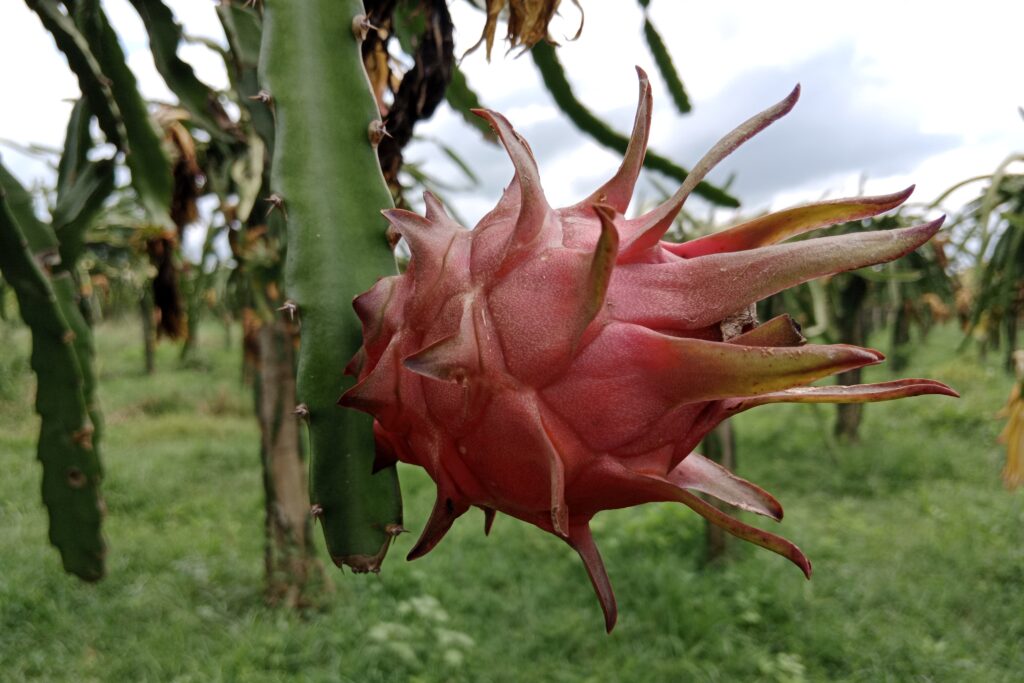
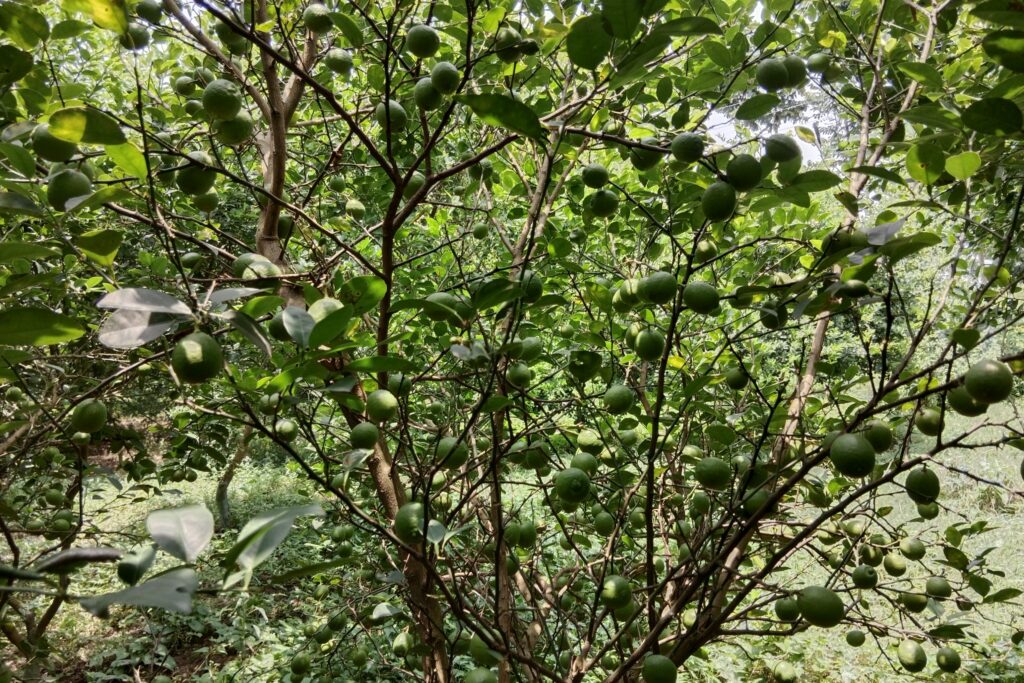
Pingback: Pea Farming Profit Per Acre -